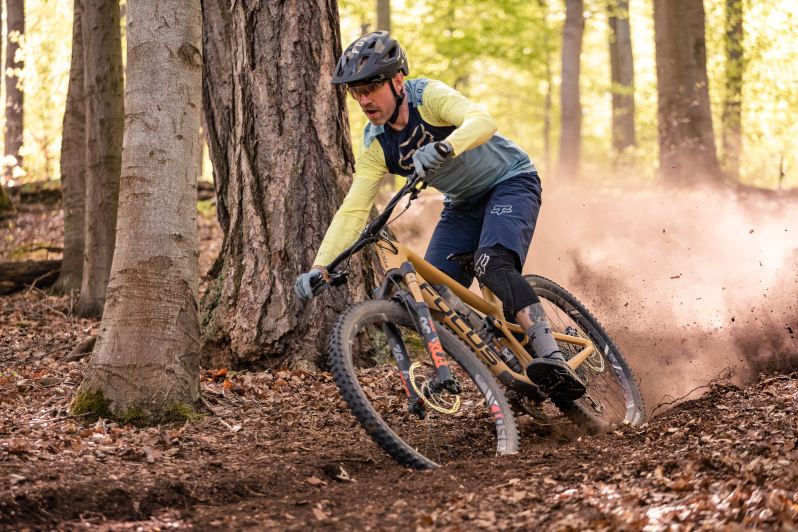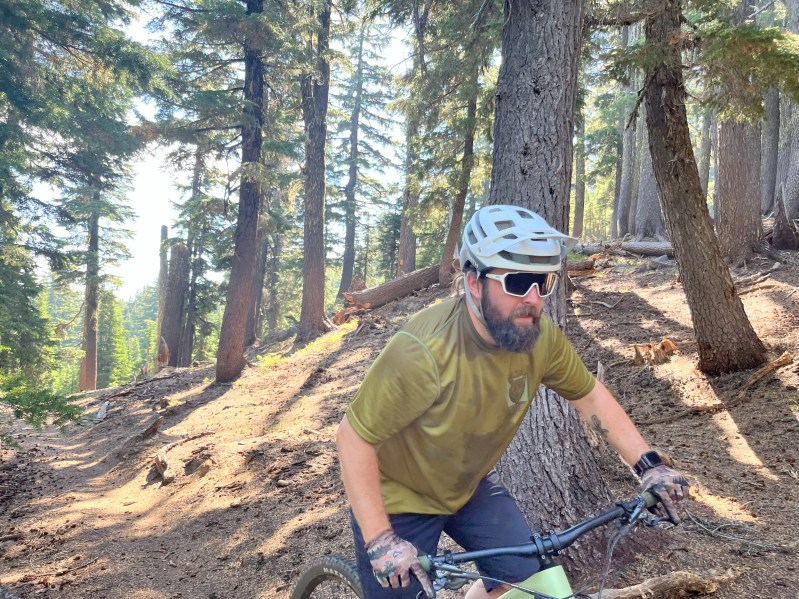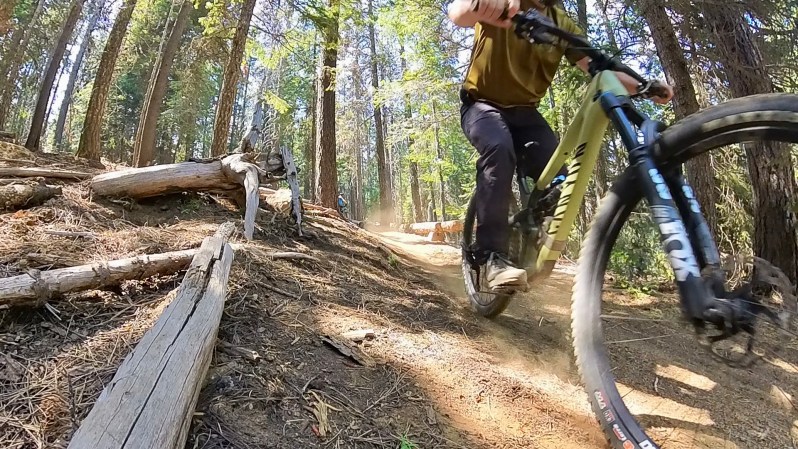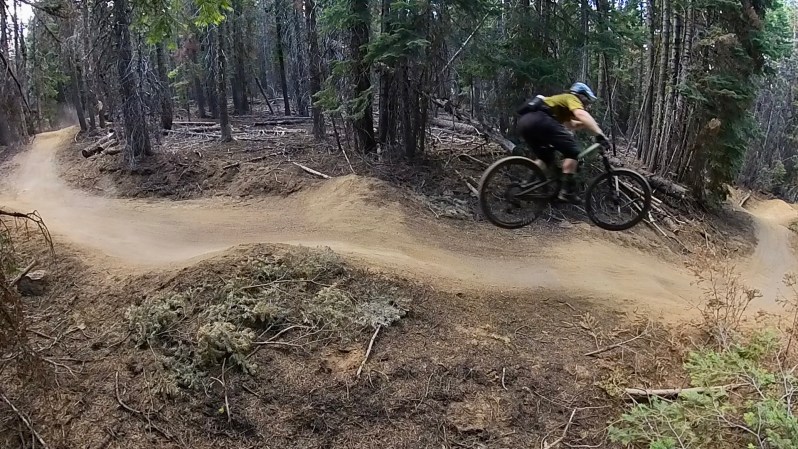
When someone first makes the plunge into the mountain bike world, there are certain fundamentals they are taught when learning to mountain bike. And while these fundamentals are necessary for learning how to safely mountain bike, they can ultimately hinder a mountain biker’s progress.
Take cornering, for example. When we learn to mountain bike, we learn to have level pedals. Keeping your crankarms in the north/south position, although it lets you relax your legs, puts one pedal significantly closer to the ground, dangerously close for pedal strikes on rocks and roots.
We should keep our pedals level as we cruise over and around obstacles in the trail. But did you know that level pedals are preventing you from cornering faster?
While it is essential to work from these fundamental mountain bike basics, it is also important to progress beyond them; frankly, some may be holding you back in the corners.
Braking and cornering

Braking seems like the opposite mindset from learning to start cornering faster. However, when it comes to many things you do on your mountain bike—not just cornering—better braking leads to faster riding.
The idea of good cornering on a mountain is to be able to leave the corner faster than you entered it, and nothing will prevent that more than improper braking. One of the most significant things you can do to begin cornering faster on your mountain bike is to learn when to brake.
One of the biggest speed killers while cornering is to be on your brakes through the corner. Sometimes, this can be necessary, as you are simply entering the corner with too much speed—it’s always better to corner poorly than to crash.
Ideally, you want to do all of your cornering before the corner, riding the entirety of the corner without touching the brakes. A great way to learn this is to find a corner you are comfortable with and start going through at a slower pace, progressively increasing speed as you see the limits of how fast the corner can be ridden. Once you find those limits, you can ride the corner normally, braking to the speed you’ve practiced cornering that particular turn.
And each corner is different. The more you do this, the more you can gauge how much to brake and the maximum speed you can carry into a corner.
Pushing and pumping

Exiting the corner faster than you entered requires more than braking at the appropriate time. Fast cornering also requires you to push and pump the mountain bike in and out of the corner.
Again, each corner on a mountain bike trail will be different from the next. Some corners will be big flowy berms, like you would find at a bike park. Others are going to be flat and rutted out. But, many of the same principles apply regardless of the type of corner—one just may be a bit more advanced than the next.
Learning to push and pump while cornering is usually better on a smooth berm than on a rough corner or flat turn. As you enter the corner with the appropriate speed, consider where the corner’s apex is. As you get into the turn, you want to push into your mountain bike’s suspension, compressing into the corner a bit.
Once you have pushed your mountain bike through the apex of the turn, start thinking about pumping out of the corner. As you exit the corner, begin pulling your bars toward your chest, as you would when riding on a pump track. Learning to push and pump when cornering will dramatically help you carry speed through corners.
Weight the pedals

As you gain more confidence and begin cornering faster, you will realize that keeping your pedals level through the corner is holding you back from gaining speed. While level pedals are an excellent foundational piece to learn, weighting your pedals is critical to cornering your mountain bike faster.
While you may not be dropping one foot or the other completely, learning to have one pedal up or down more will help you push the bike and carry speed. And which foot you drop will depend on which direction you’re cornering and which foot you have forward.
The easiest way to think about it is to drop and weigh your outside foot. Depending on your forward foot, that could mean dropping a foot back or forward. While cornering to the left, the drive-side foot on your mountain bike is the outside foot. If cornering to the right, the non-drive side foot should be dropped. This dropped outside foot should be the foot carrying the weight through the corner.
Again, start little and slow so you can get a feel for it. As you progress and gain confidence, you’ll see how dropping and weighting your outside foot carries and creates momentum in the corners.
These three aren’t the only steps to proper, fast cornering. However, learning when to brake, how to push and pump, and properly weighting the pedals should tremendously help your cornering.
It’s a process, trust it.



